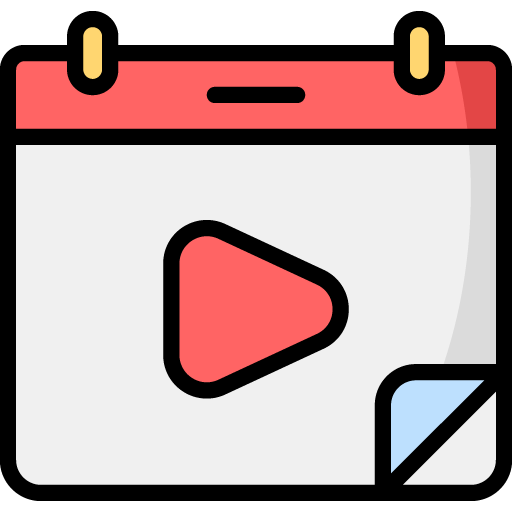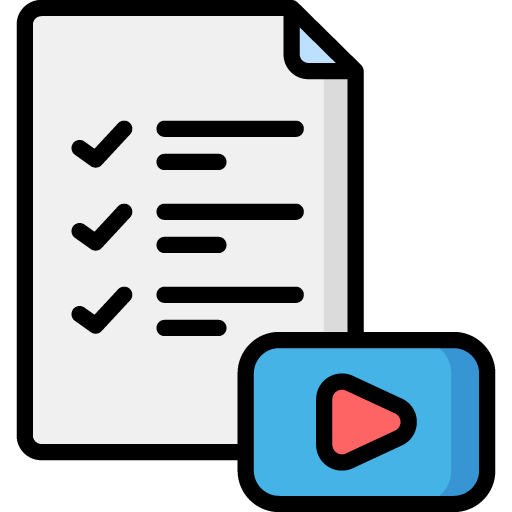In today’s digital-first world, B2B brands are no longer confined to whitepapers and webinars. YouTube has emerged as one of the most powerful tools for business-to-business marketing, offering a unique space to build trust, showcase expertise, and drive leads. But success on YouTube doesn’t come from simply uploading random videos. It demands a strategic, thoughtful approach.
YouTube is the second-largest search engine in the world and a trusted resource for decision-makers. According to Google, 70% of B2B buyers watch videos as part of their purchasing journey.
The Ultimate Guide to YouTube Content Strategy
For B2B Brands
Why YouTube Matters for B2B
Some of the key benefits of YouTube for B2B brands include:
- Building authority and trust through consistent value-driven content
- Engaging stakeholders with visually rich storytelling
- Extending reach via organic search and social shares
- Supporting SEO and increasing website traffic
- Nurturing leads through educational and product-based content
In short, YouTube is no longer optional for modern B2B brands—it’s essential.
Define Clear Business Goals
Before producing any content, it’s critical to define the business goals you want YouTube to support. These objectives will drive your entire strategy. Common goals for B2B brands include:
- Increasing brand awareness
- Driving traffic to a landing page or website
- Generating qualified leads
- Establishing thought leadership
- Supporting the sales process
- Recruiting talent
Having clear goals will help keep your content focused and measurable.
Know Your Audience
Understanding your target audience is the foundation of any great content strategy. Creating detailed viewer personas is a must. Start by:
- Identifying the job titles or roles you’re targeting (e.g., IT manager, marketing director)
- Understanding their pain points, motivations, and content preferences
- Determining content types they prefer: explainer videos, how-tos, case studies, etc.
The more precisely you define your audience, the more effective your content will be.
Map Content to the B2B Buyer’s Journey
Aligning your strategy with the B2B buyer’s journey is essential.
- Top of Funnel: Thought leadership, industry trends, and educational content to build awareness
- Middle of Funnel: Webinars, tutorials, and solution explainers to guide consideration
- Bottom of Funnel: Product demos, client testimonials, and behind-the-scenes content to drive decisions
A diversified content mix ensures you’re nurturing viewers at every stage.
Build a Content Pillar Strategy
One powerful way to stay organized is by building a content pillar strategy. Group your videos into themed categories that align with your audience’s interests and your business objectives. Common pillars include:
- Industry Insights & Trends
- Product Education
- Customer Success Stories
- Company Culture & Events
- Innovation Behind-the-Scenes
Each pillar can support multiple series or standalone videos, adding structure and depth to your channel.
Plan Topics with Purpose
Strategic topic planning should be guided by data:
- Analyze your top-performing blog posts
- Study competitors’ content
- Use tools like TubeBuddy, VidIQ, and Google Trends
- Collaborate with sales and support teams to gather common questions
Prioritize topics that align with both search demand and your business objectives.
Optimize for YouTube Search
Optimization for search is key to being discovered. Apply YouTube SEO best practices:
- Include primary keywords in video titles, descriptions, and tags
- Create compelling custom thumbnails
- Use timestamps for easy navigation
- Add transcripts and captions
- Organize videos into playlists to improve watch time
These steps are critical to improving your content’s organic reach.
Focus on Quality Production
Quality matters in the B2B space. While you don’t need a massive budget, your production should reflect the professionalism of your brand:
- Use high-quality audio and visuals
- Maintain brand consistency in intros and outros
- Keep videos concise and valuable (3 to 10 minutes is ideal)
- Clean editing and polished visuals enhance credibility and retention
Stay Consistent with a Content Calendar
Consistency is another cornerstone of YouTube success. Create a content calendar to plan your uploads and maintain momentum:
- Start with 1–2 videos per month
- Align publishing with product launches, industry events, or seasonal trends
- Use tools like Notion, Trello, or Asana to stay organized and on track
Promote Across Channels
Promotion is often overlooked, but it’s just as important as publishing. Don’t rely on YouTube’s algorithm alone:
- Share videos on LinkedIn, email newsletters, your blog, and relevant forums
- Repurpose content into short clips, audiograms, or quote graphics
- Embed videos on your website for added SEO benefit
Use Analytics to Refine Strategy
Once your videos are live, use YouTube Analytics to track performance:
- Watch time
- Click-through rate (CTR)
- Audience retention
- Subscriber growth
- Conversions
Monitor how different content types, topics, and promotion channels perform so you can iterate intelligently.
Learn from B2B YouTube Success Stories
Take inspiration from these B2B brands:
- HubSpot: Grew to over 100K subscribers through consistent educational content aligned with inbound strategy
- IBM: Shares thought leadership, expert interviews, and innovation showcases
- Salesforce: Uses YouTube for customer success stories and virtual event replays
These companies prove that consistency, value, and professionalism are the keys to long-term B2B success.
Final Thoughts
A well-executed YouTube content strategy can give your B2B brand a serious competitive advantage. It’s not just about video production—it’s about understanding your audience, aligning with your goals, and delivering consistent value.
Whether you’re leading marketing at a mid-size business or an enterprise-level firm, YouTube can help you connect, convert, and scale.
Start small. Stay consistent. Keep optimizing. The results will follow.







 Edit Your Footage
Edit Your Footage
Leave a Reply